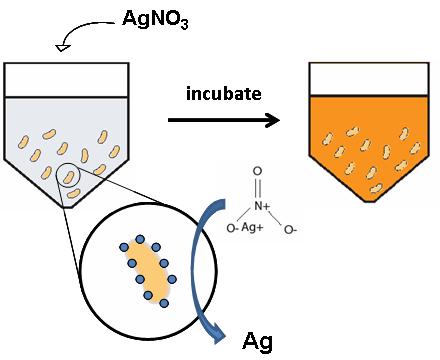Team:Berkeley Wetlab/Passenger: Ag4 Peptide
From 2009.igem.org
Contents |
Ag4 Peptide
The Ag4 peptide is a small 12 amino acid peptide (NPSSLFRYLPSD). This peptide is has been shown to bind to and reduce silver. The surface display of this peptide has the potential of inorganic material synthesis via mimicking the recognition and nucleation properties found in natural biomineralization processes. In cell surface display, there is the additional advantage of self-replicating cells that serve as both a continual factory of silver particle synthesis and the scaffold that supplies a matrix for the synthesized materials.
Functional Assay: AgNO3 Reduction
This assay tests for the presence of the AG4 silver binding peptide on the E. coli cell surface, and it's ability to bind and reduce silver
constructs: AG4 peptide (8) 1363 negative control (1)
Initially verified: AgNO3 does not react with LB or TBS
growing cells
- inoculate cells from stock into LB with the appropriate antibiotics and grow to saturation (12+ hours)
- dilute culture 1:100 into media with arabinose and induce for 5-12hours
- pipet 100ul of cells to Costar V-bottom polystyrene plate and take OD
Wash cells and incubate in AgNO3
- pipet 2mls of culture into a 24-well block
- pellet the saturated induced culture
- pour out the supernatant
- wash cells 2X with 200ul of TBS
Treating with Silver
- make 10mM stock of AgNO3
- add 200uL, 1ml, and 2ml of 0.1 mM silver nitrate and resuspend the cells (add 180 ul of TBS to each pellet, resuspend cells, add 20 ul of 1 mM AgNO3)
- incubate overnight at room temperature
- observe color change and precipitate formation
- take pictures with TEM
Results

note: the color that appeared were in solution, not in precipitate form.
Also, the lack of color from constructs 11-14 might be because of small volumes since previous experiment had shown color and precipitate.
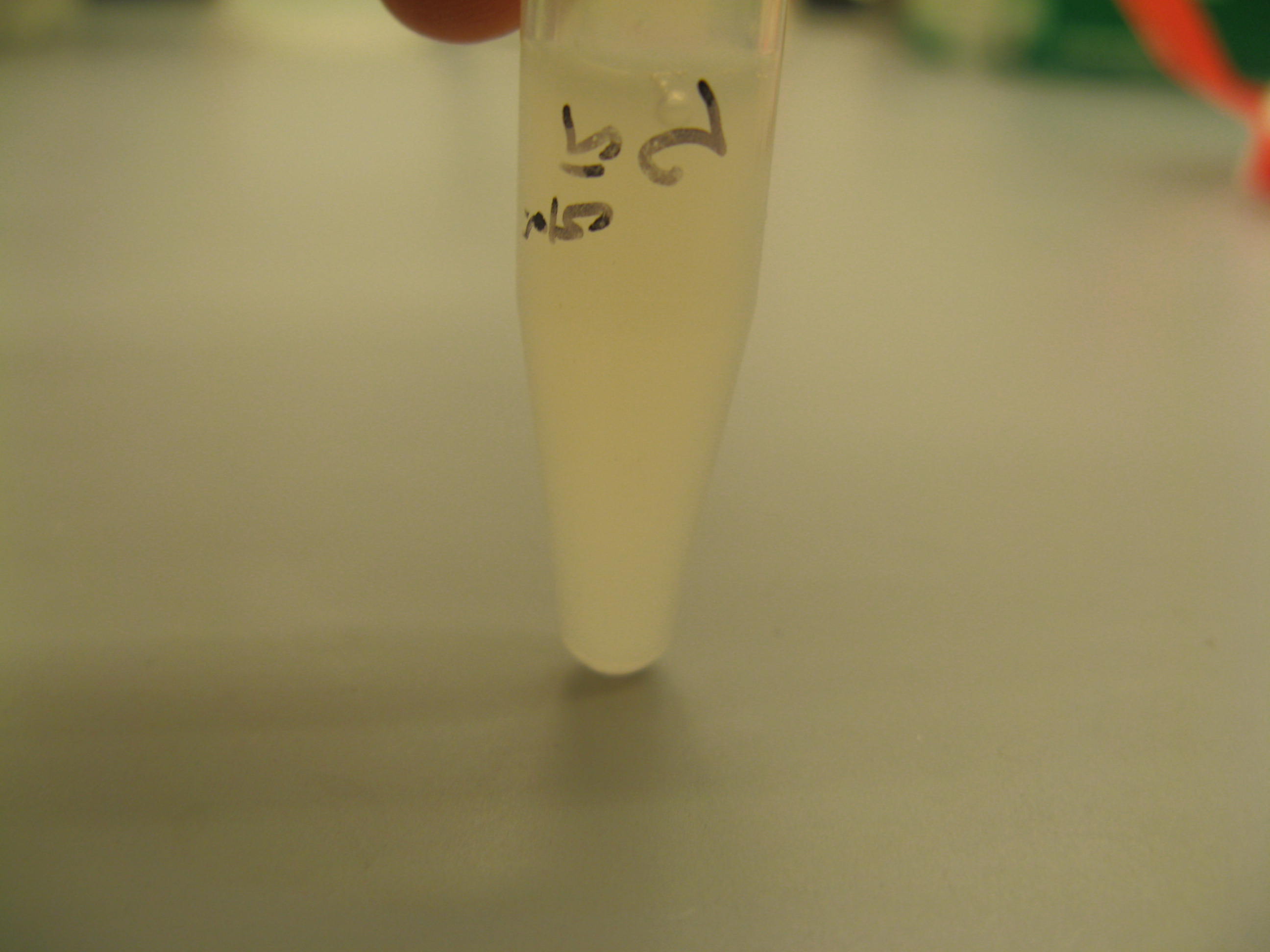
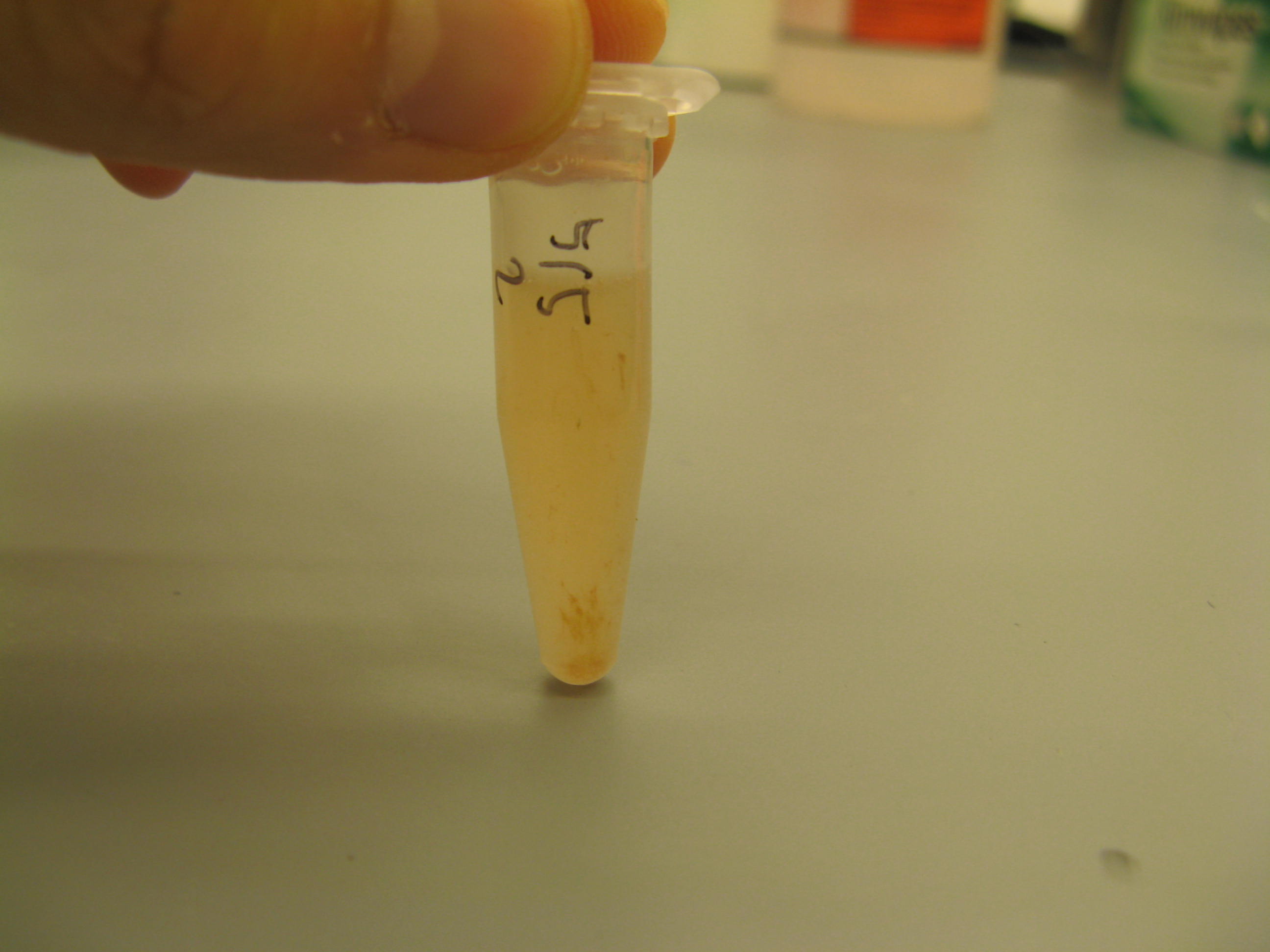
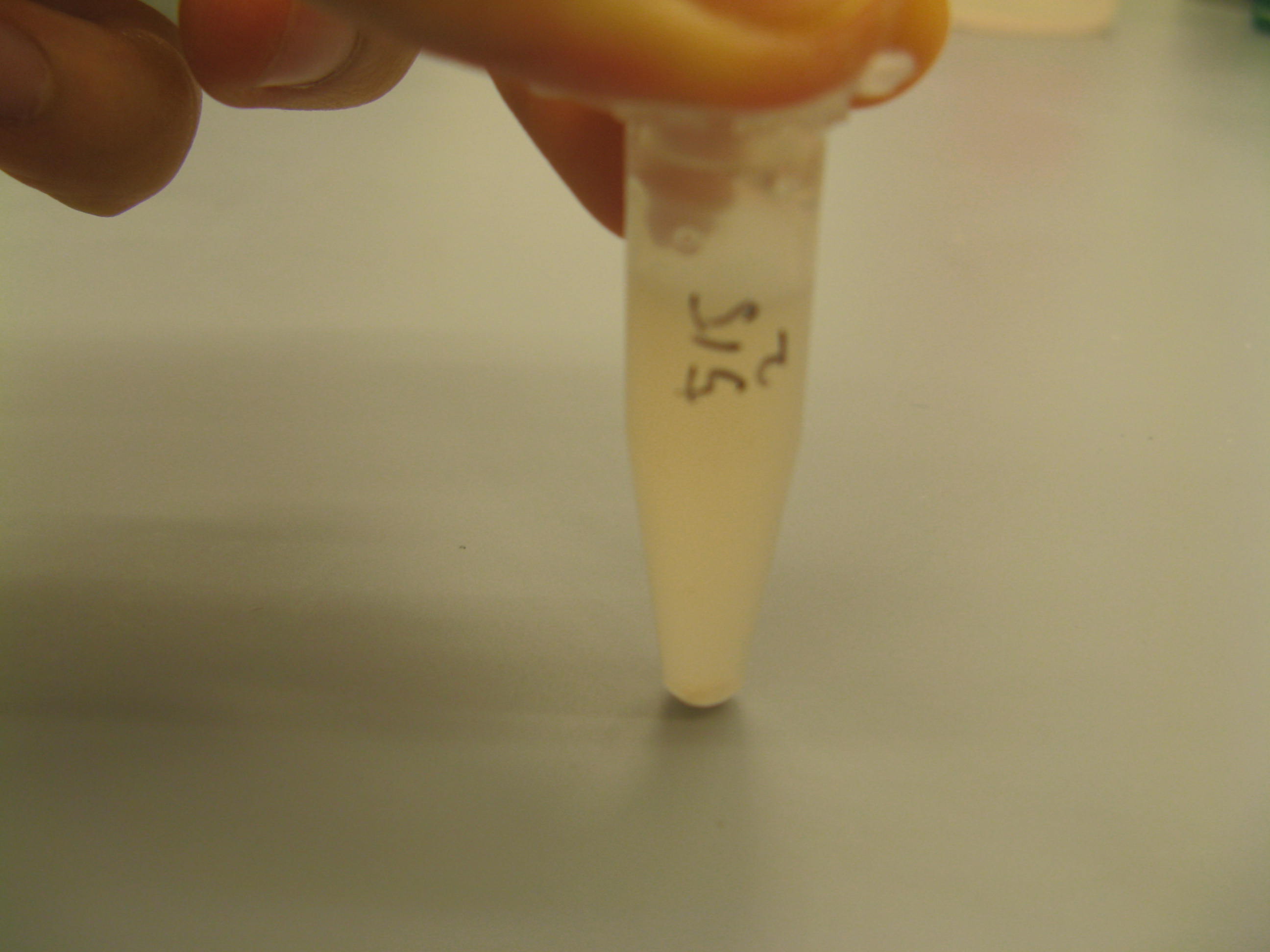
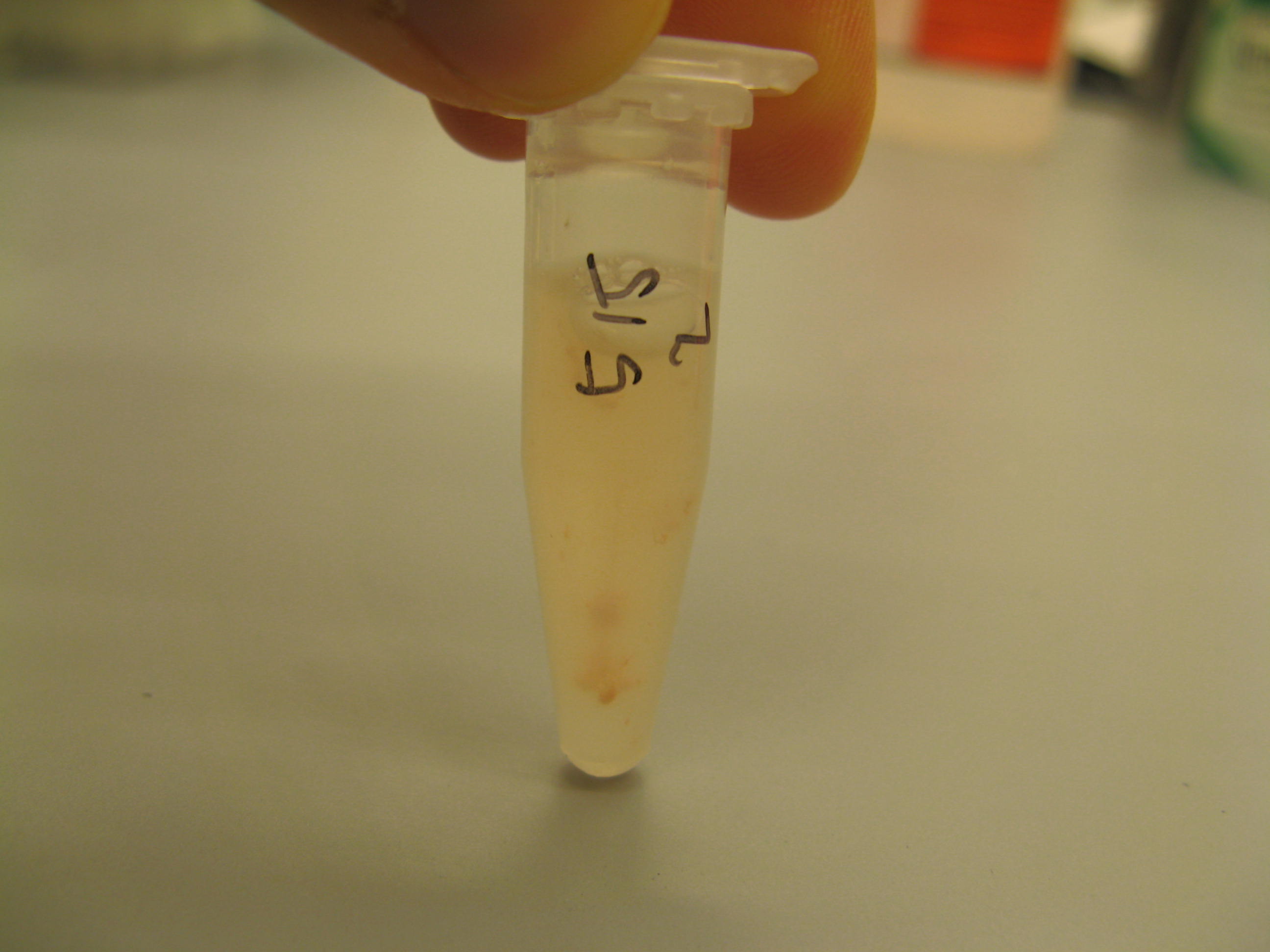
control, construct 15, construct 16, construct 17 (2ml)
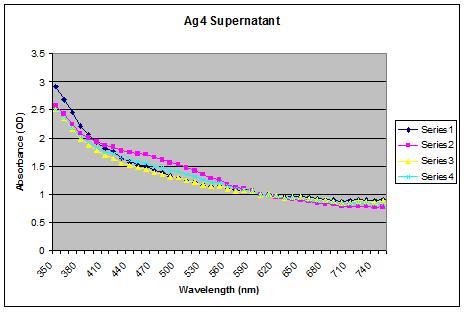
control
construct15
construct16
construct17
A noticeable increase in absorbance around 440nm-500nm. To get rid of the scattering signal, cells were spun down, and this graph was generated using the respective supernatants. The peak at 440nm is characteristic of the silver particles. This indicates that silver particles have been made.
References
Rajesh, R. et al. Biomimetic synthesis and patterning of silver nanoparticles. Nature Materials. October 2002; (1): 169 - 172. Available Online: http://www.ncbi.nlm.nih.gov/pmc/articles/PMC2620822/ (Accessed: 20 October 2009).
 "
"
